A RUG FOR THE PERGAMON MUSEUM
A RUG FOR THE PERGAMON MUSEUM
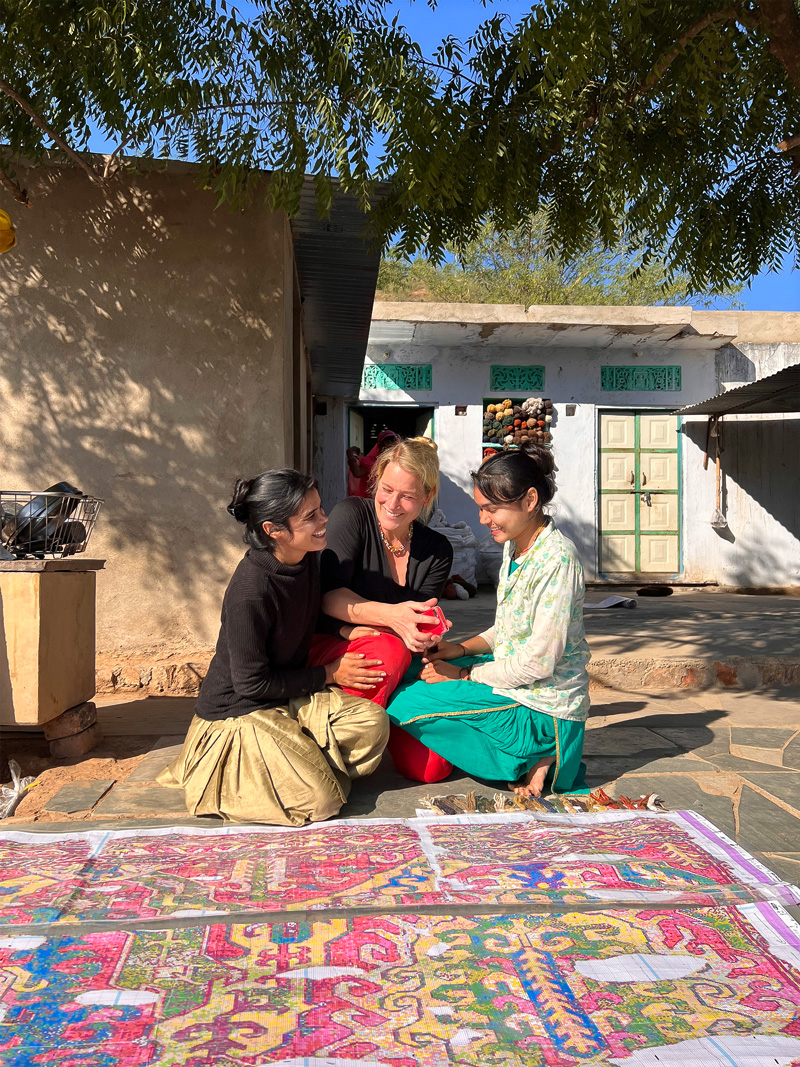
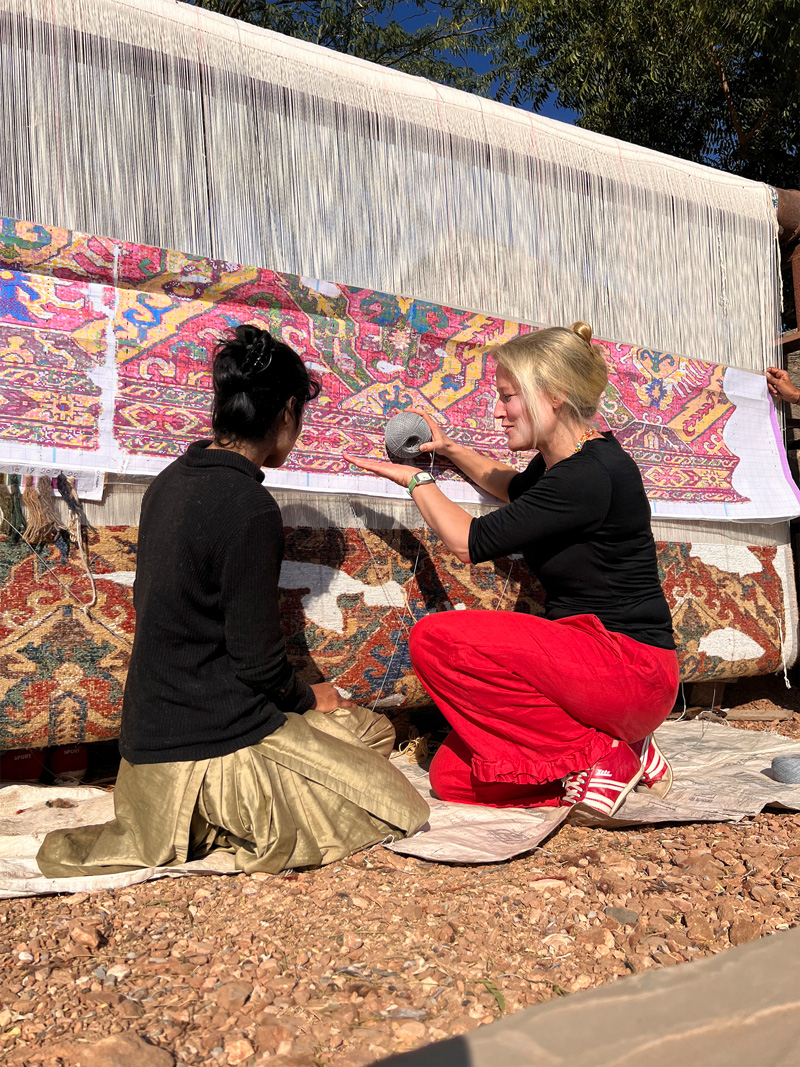
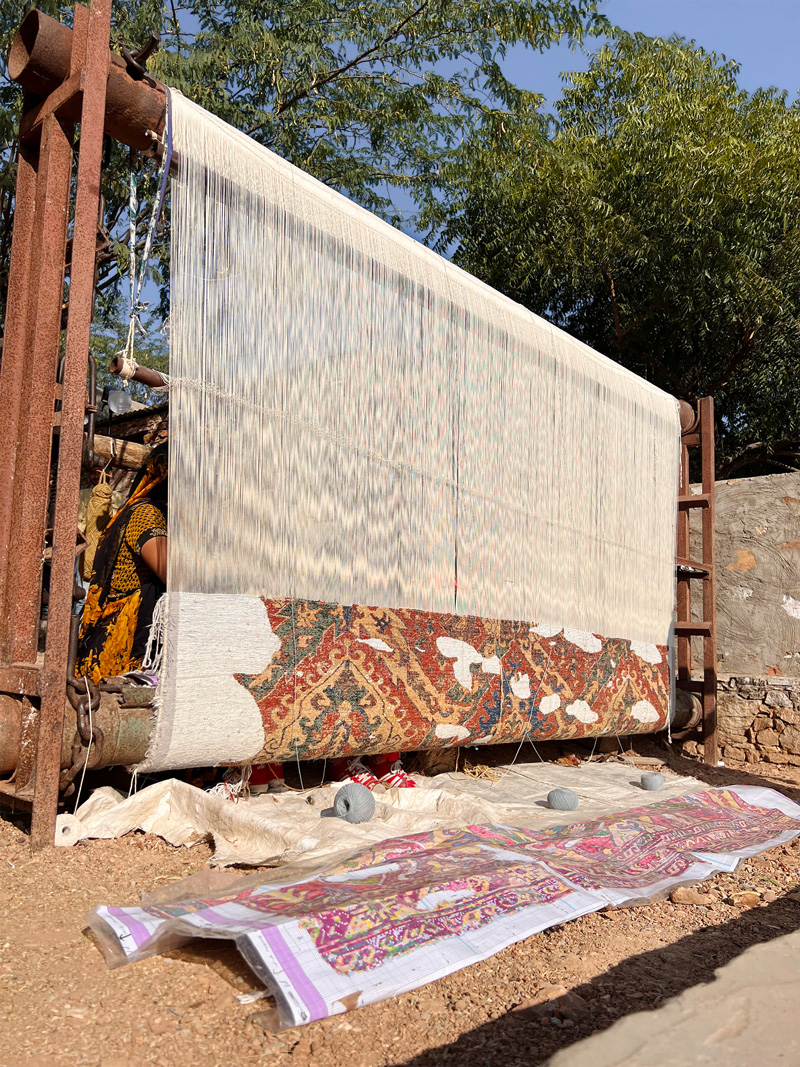
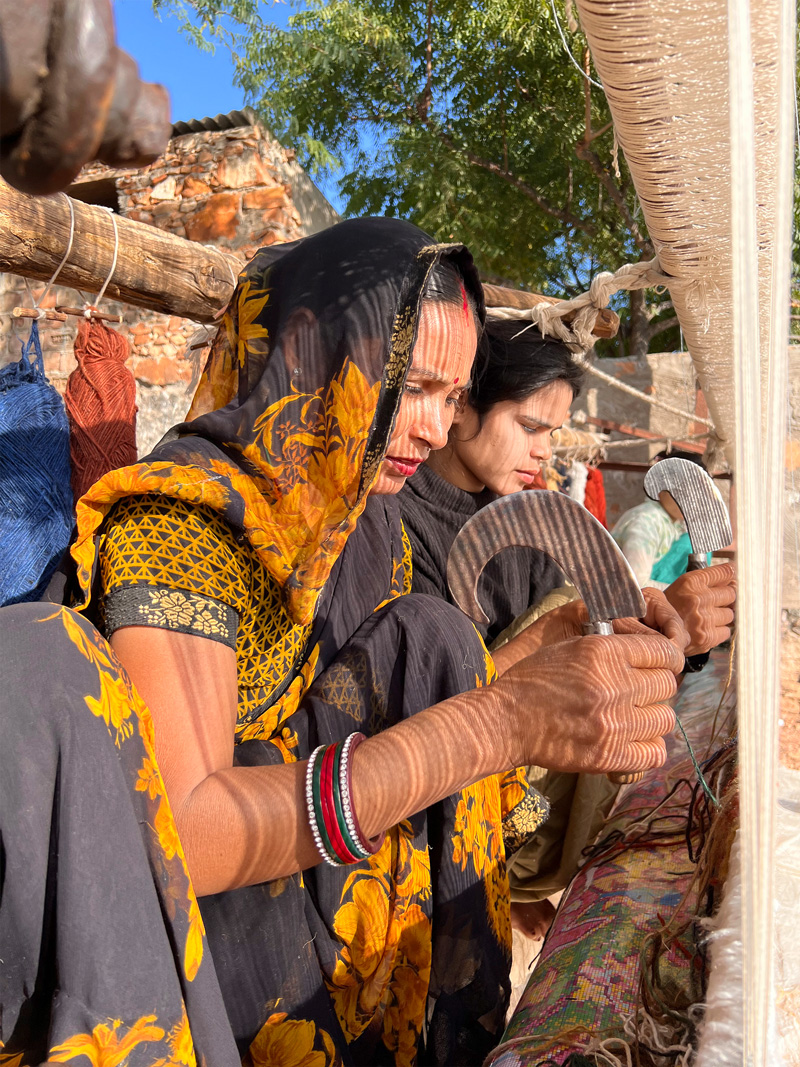
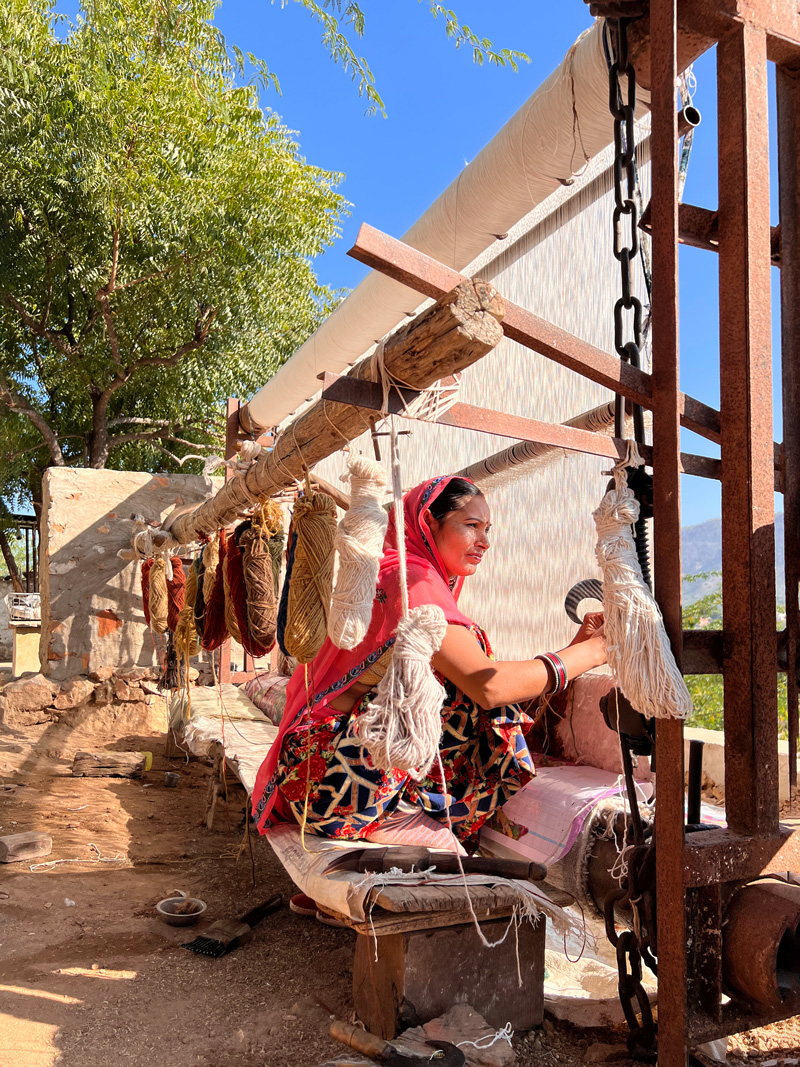
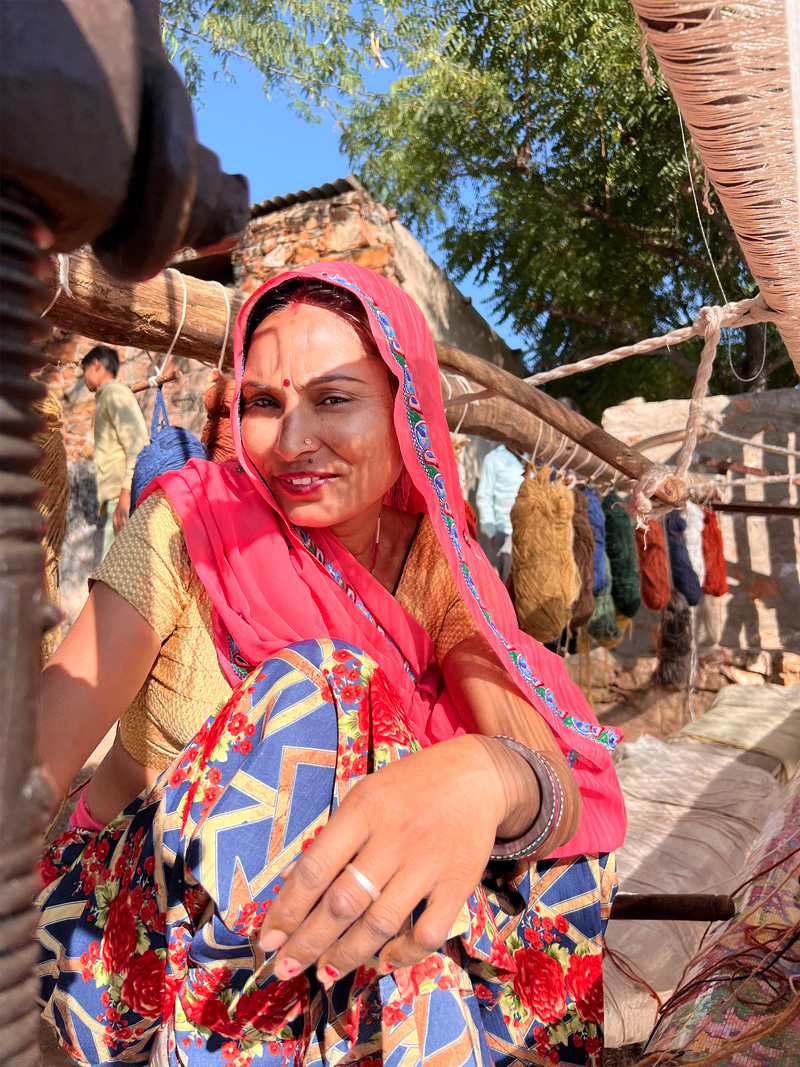

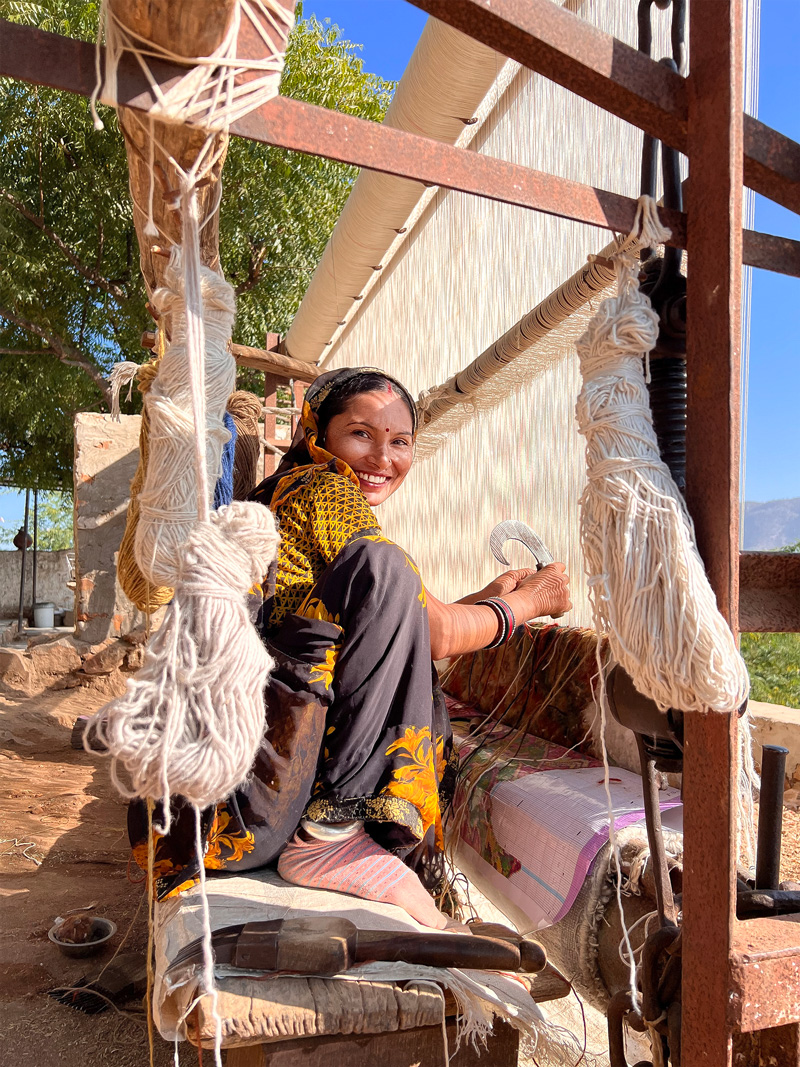
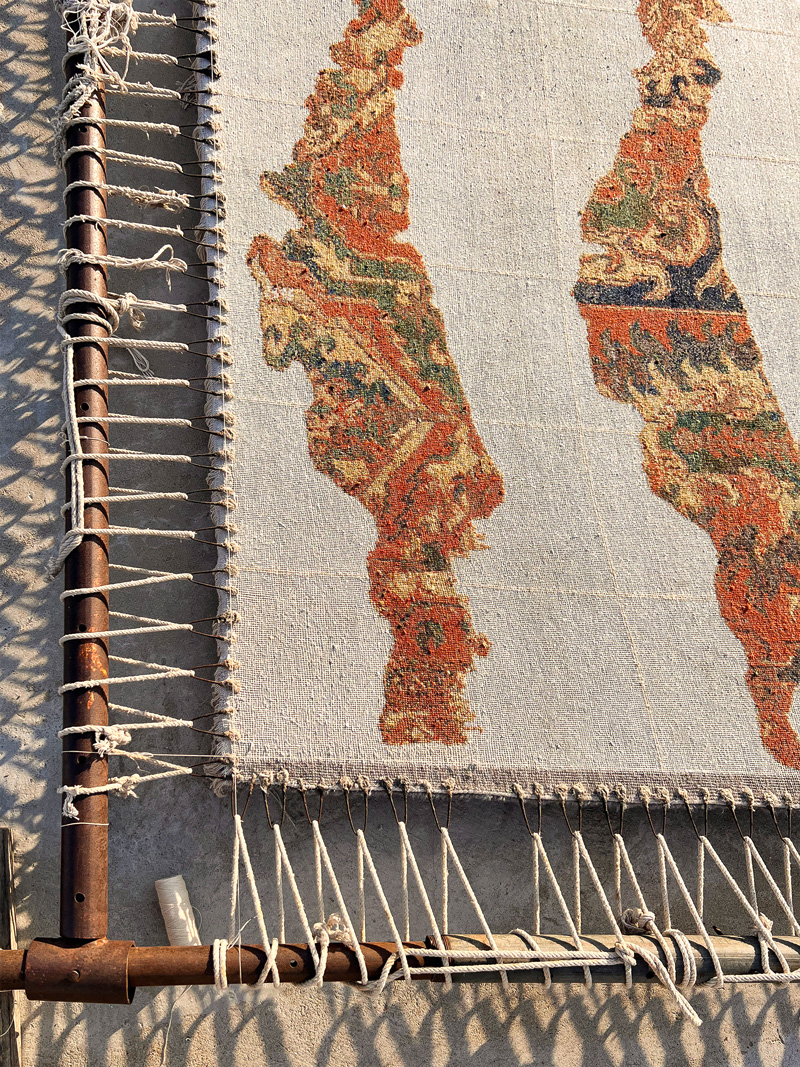
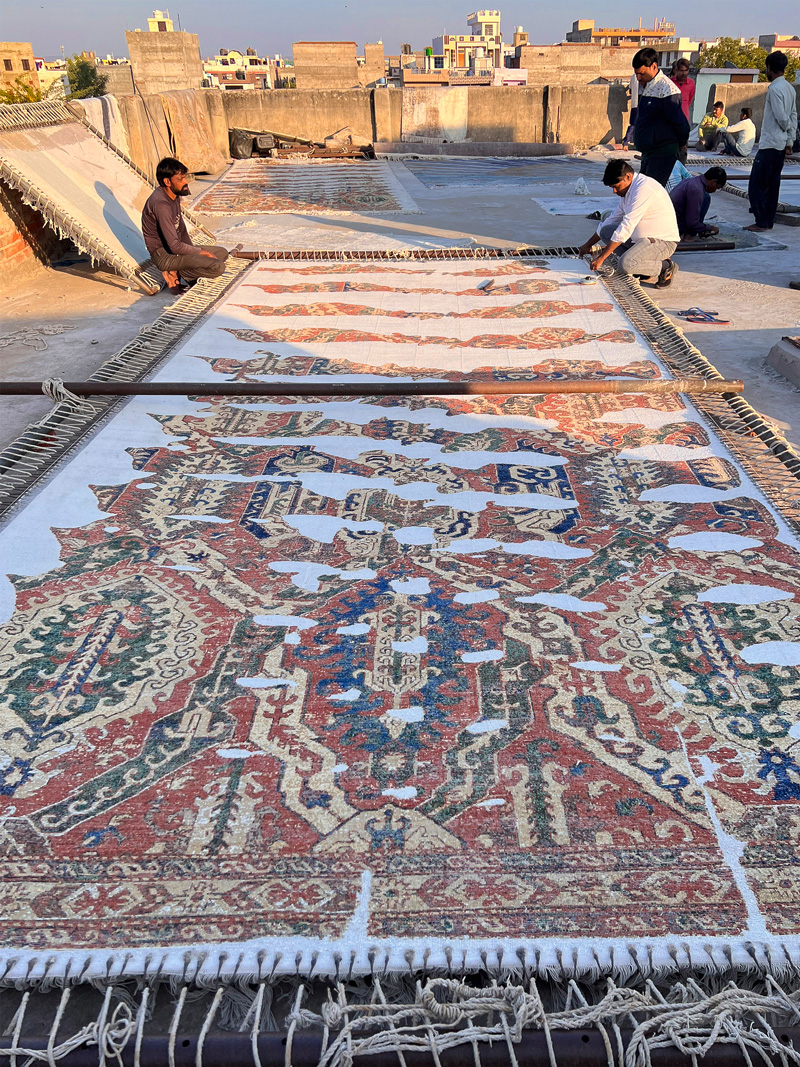
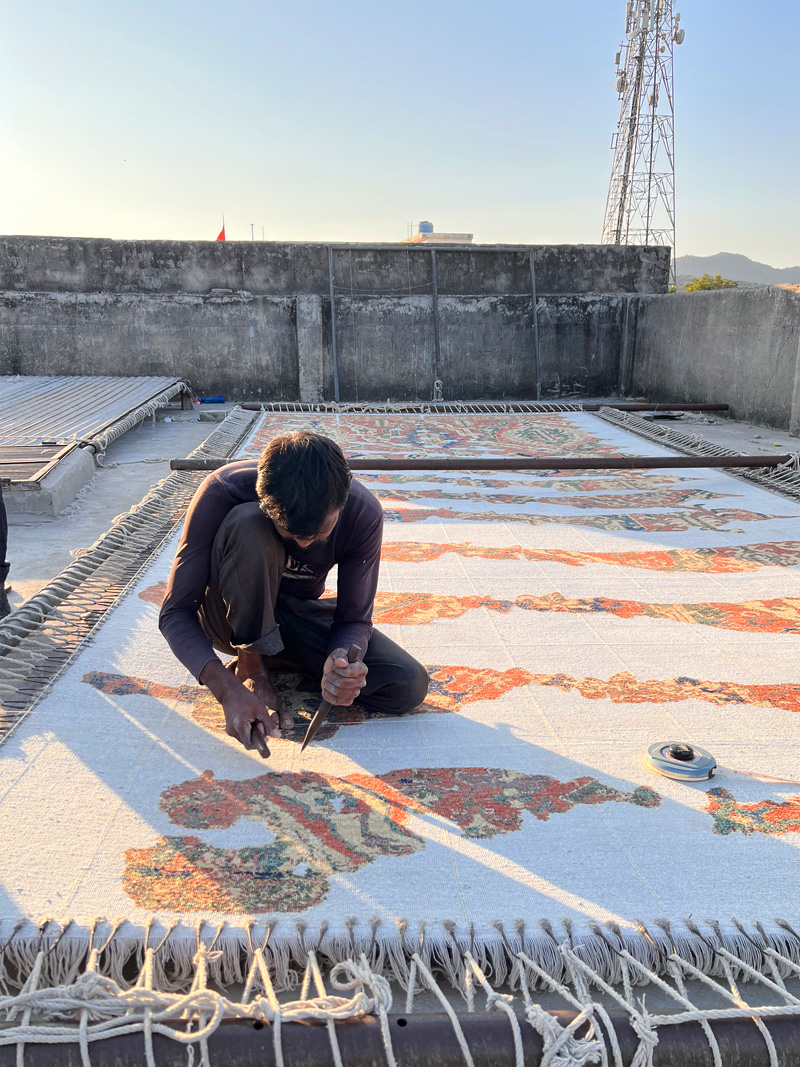
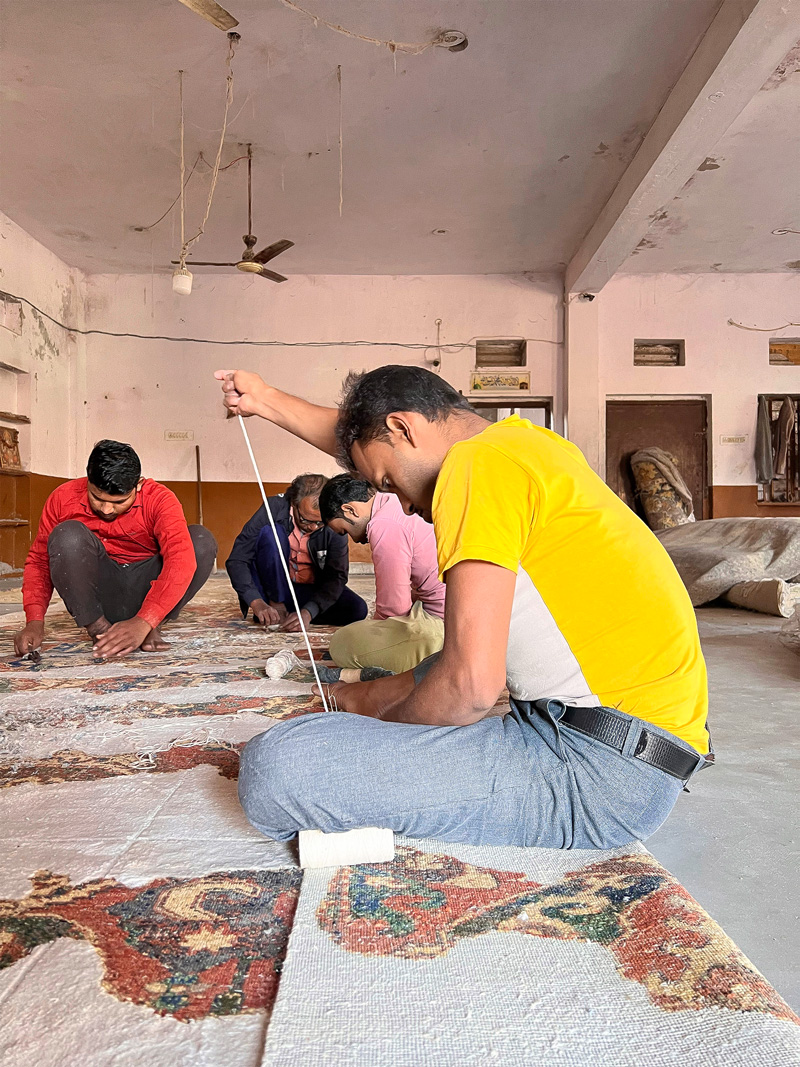
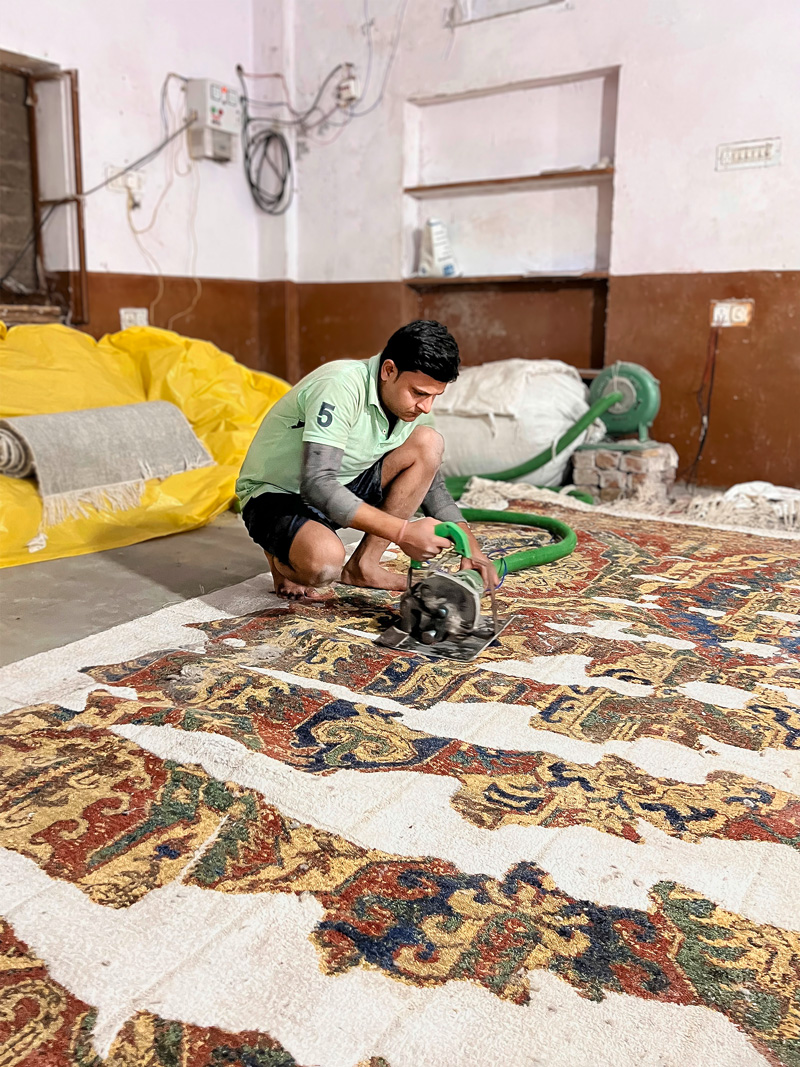
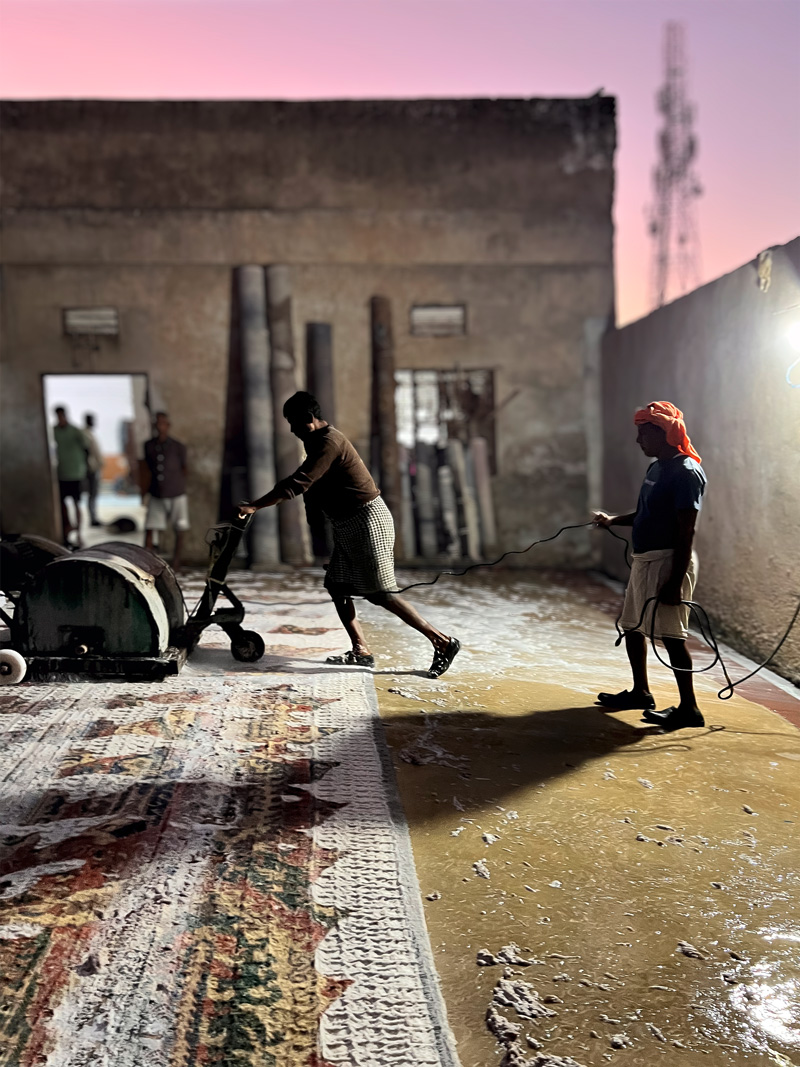
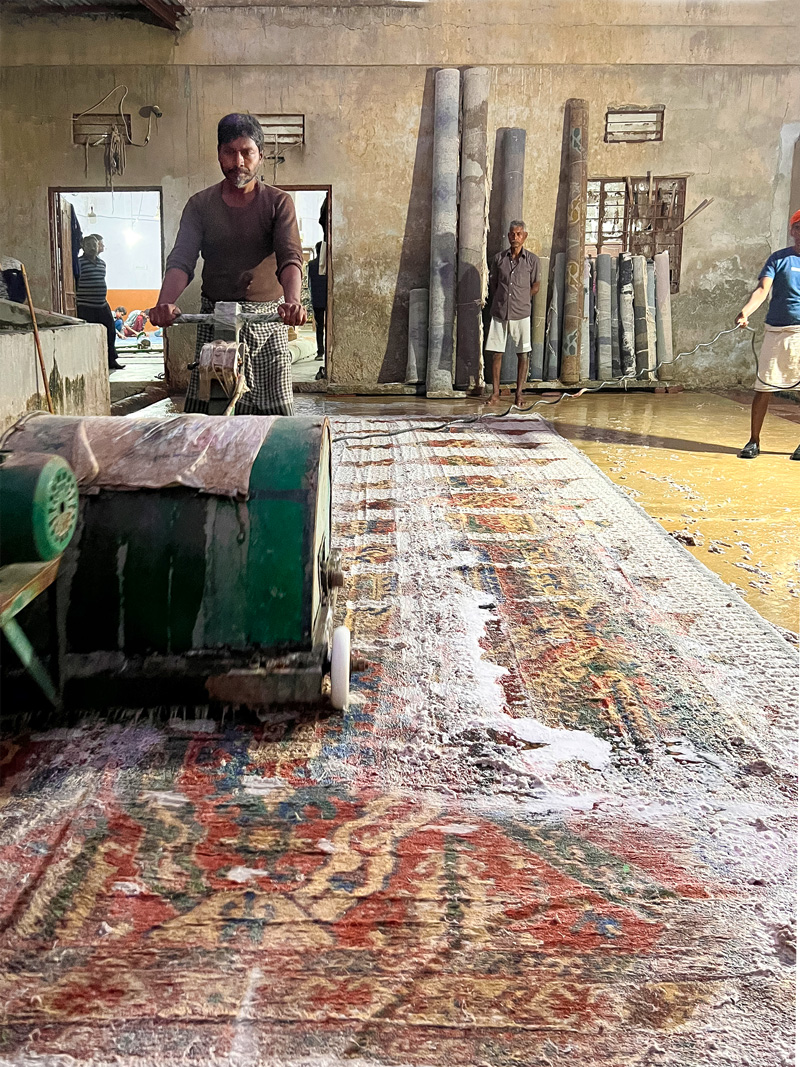
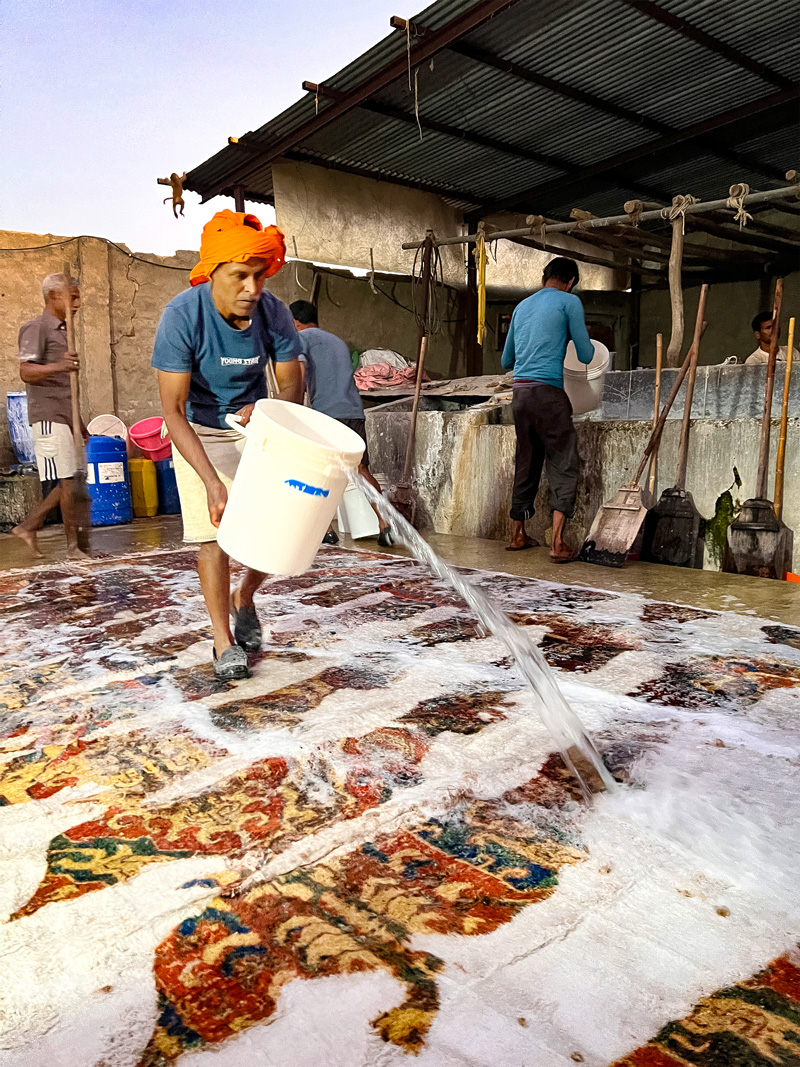
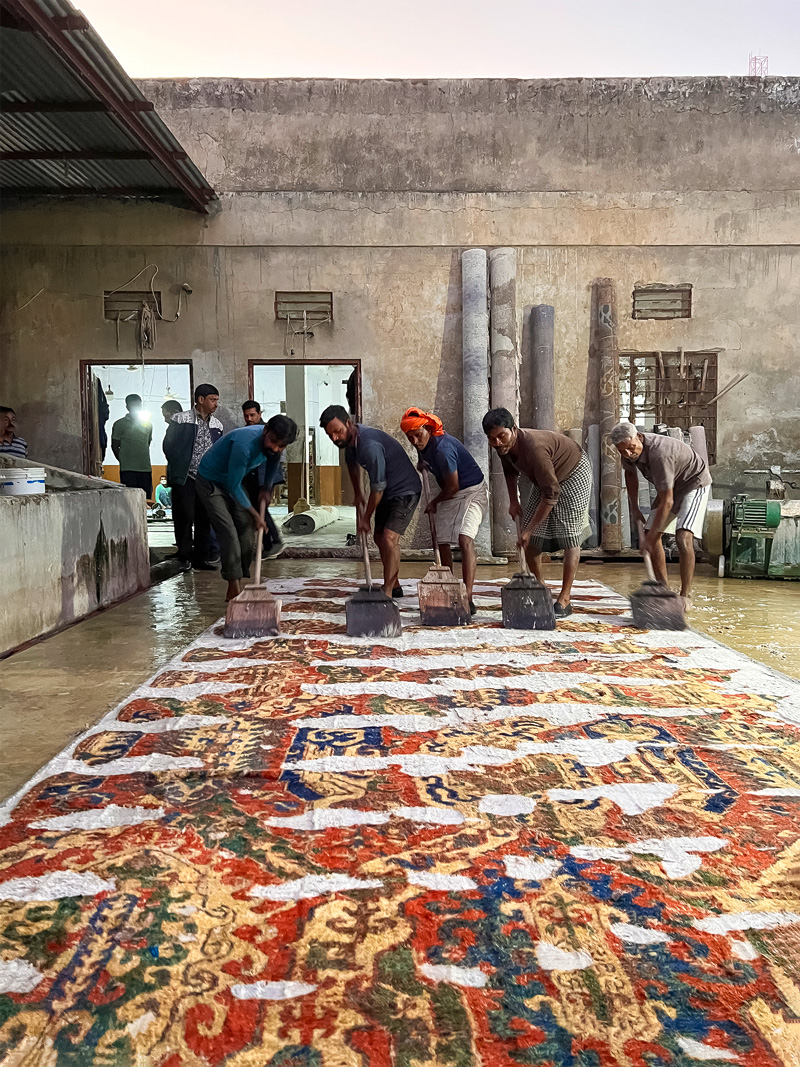
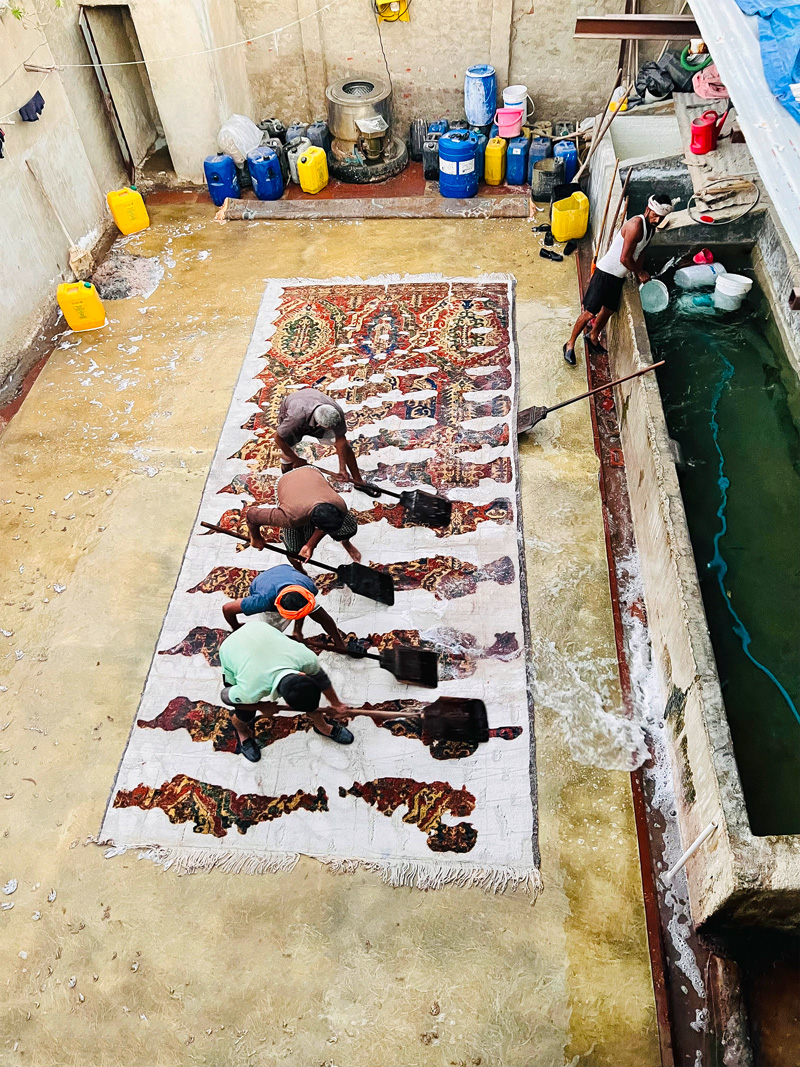
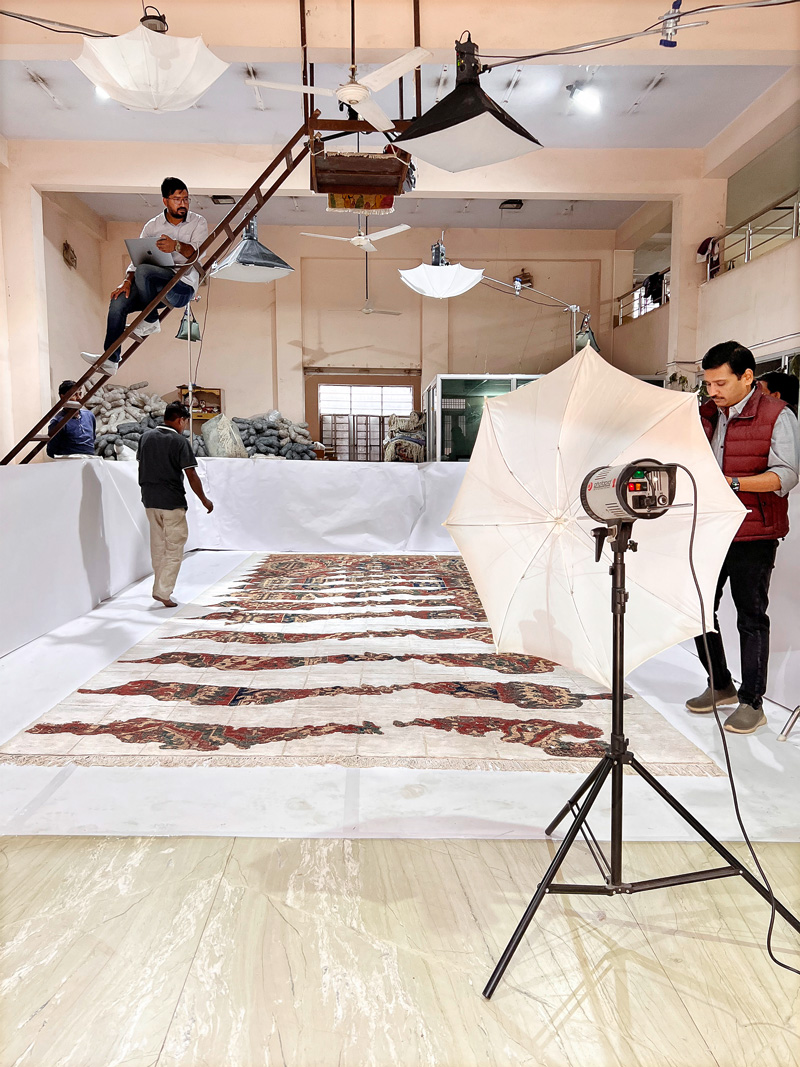
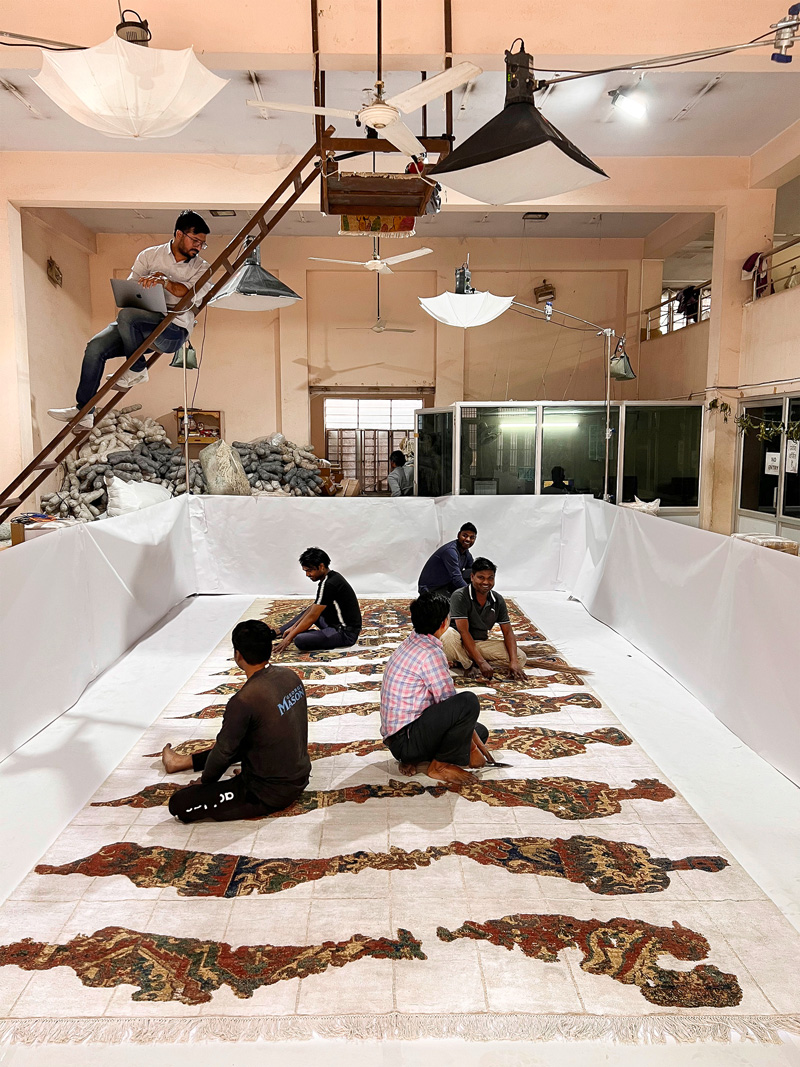
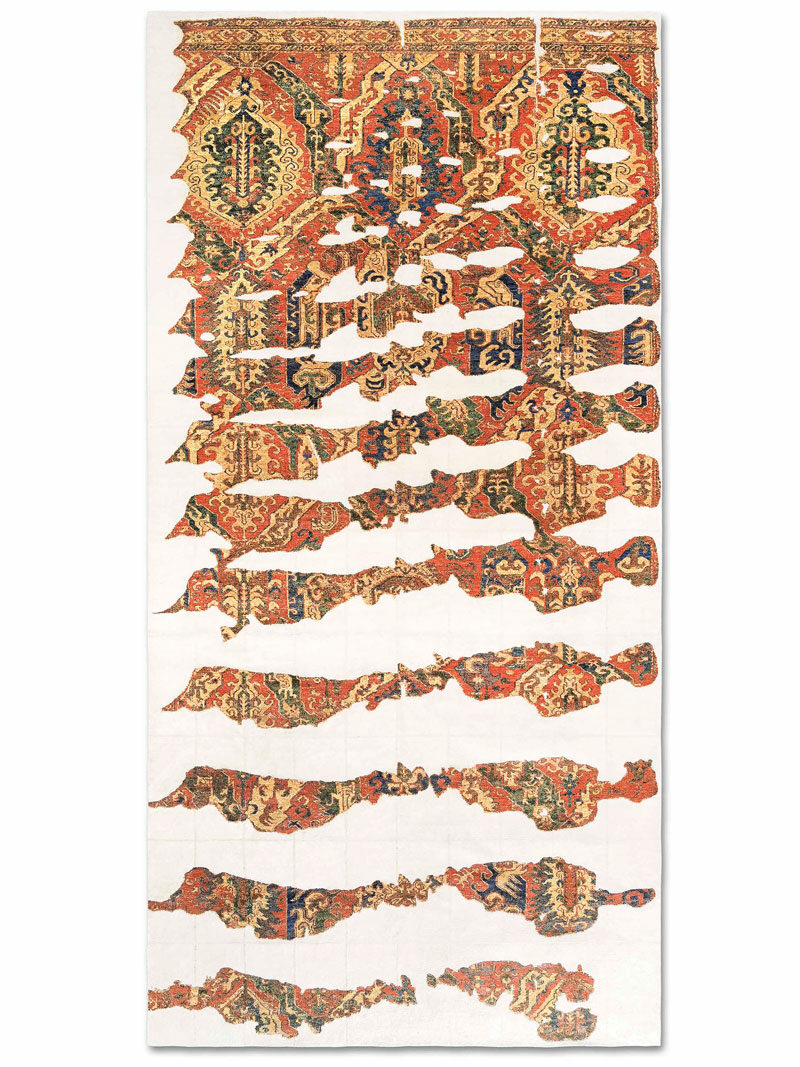

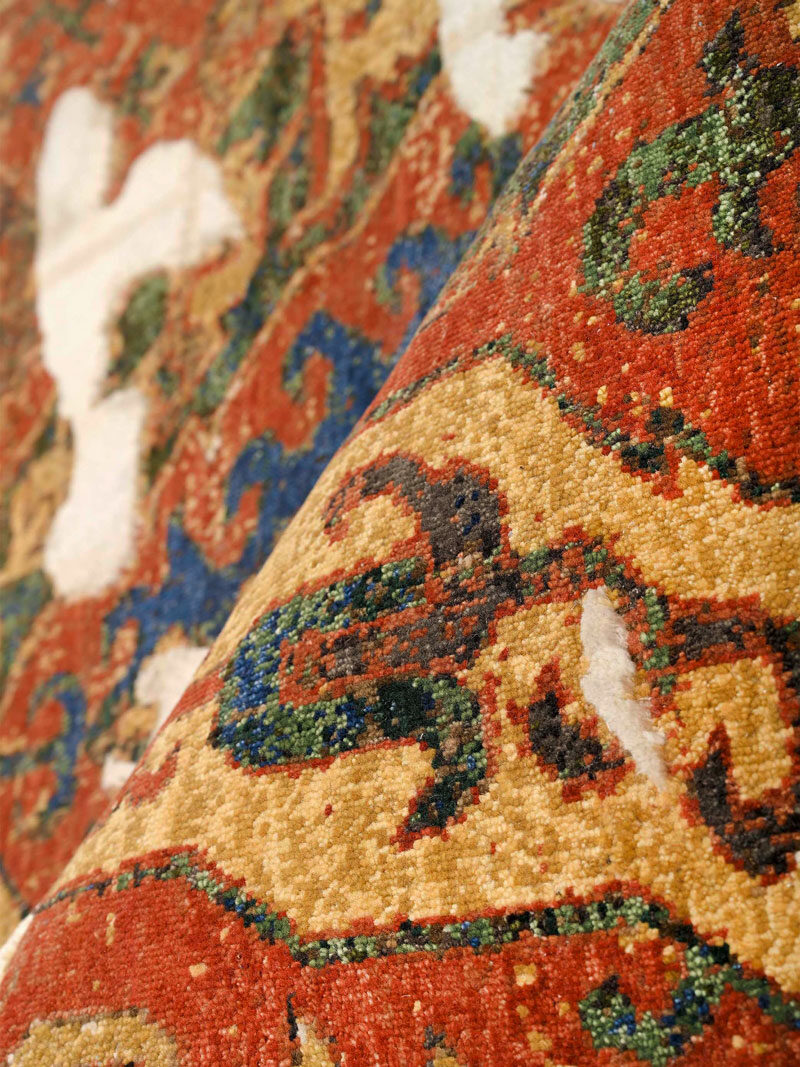
After seven years of successful production in Nepal, I felt a burning desire to explore new horizons and expand my skills in the world of hand-knotted rugs. In 2009, I ventured across the border to India, searching for the perfect location to fulfill a new dream of mine—the production of Persian weave. I had already mastered the Tibetan weave, and I was eager to embark on this new creative journey.
During my time in Nepal, I immersed myself in every aspect of the rug production process. I spent countless hours in the workshops, learning about spinning the wool, dyeing the colors, setting up the loom, and witnessing the dedication and coordination of a small group of people working together for months to create a single rug. It was an invaluable experience that gave me a deep understanding of the craftsmanship and the intricate processes involved.
With a strong desire for a liberal environment that would nurture my passion for innovation, I found everything I had dreamt of in Rajasthan, in the northern part of India. Here, in the vibrant city of Jaipur, I discovered two exceptional workshops that would become integral to RUG STAR’s production. I also expanded our activities to Agra, a city with a heritage of Persian weaving spanning over 500 years. This historical connection was crucial to me, as it ensured that the production of Persian rugs had deep roots and authenticity.
The vision of RUG STAR is simple yet profound—I want our hand-knotted rugs to come alive, exuding a sense of vitality and sensuality. Over the course of 18 years, we have continuously strived to enhance the “identity and movement” within our rugs. We never compromise on the quality of materials or the production process, as it is these elements that breathe life into each individual RUG STAR creation. The depth of knowledge and the meticulous attention to detail required in the production of hand-knotted rugs demand constant curiosity and dedication, which I wholeheartedly embrace.
One of my particular strengths lies in creating movement within the pattern of a hand-knotted rug. Achieving this flowing effect requires a combination of different techniques. It starts with carefully selecting rich wool that possesses subtle color variations within its structure, adding depth and texture. This concept is further emphasized in the dyeing process, where traditional pot dyeing techniques are employed, resulting in a beautiful gradation of color known as abrash.
The Persian weave differs significantly from the Tibetan weave in terms of knotting technique. In the Persian weave, a single thread is used to make each knot, resulting in a more pixelized appearance. This unique characteristic can be artfully integrated into the design language or concealed through the washing process. Speaking of which, I consider the washing process to be the magical ingredient for the Persian weave at present. Through techniques such as “oxidization,” we have created a method that infuses the rug with a captivating sense of flow and patina, already established within the production process. Additionally, “sandblast” offers a softer and more delicate flow, enhancing the rug’s ability to reflect light on its surface. I find this technique particularly enchanting and perfectly aligned with the contemporary aesthetic demands of our time.
The journey of creating each hand-knotted rug is a labor of love that involves thousands of working hours. Witnessing the harmony of the production process is akin to experiencing a blessing, and it makes every ounce of hard work invested by each member of our team truly worthwhile.
At RUG STAR, we continue to push the boundaries of design and craftsmanship, striving to infuse our rugs with life, character, and a touch of magic. The Persian weave has opened up new possibilities and avenues for creative exploration, allowing us to weave stories and emotions into every thread. It is a journey of constant discovery and innovation, and I am immensely grateful for the opportunity to bring these visions to life.
The Persian weave has given us the chance to delve deeper into the artistry of rug-making. It has allowed us to explore the interplay of colors, textures, and patterns in a way that is distinctively Persian. The meticulous process of knotting each thread with precision and care, using a single thread, adds a pixelized effect that can be harnessed creatively in our designs. It provides a unique canvas for our artistic expression.
However, it is the washing process that truly adds the final touch of magic to our Persian weave rugs. Through innovative techniques such as “oxidization” and “sandblast,” we have found ways to enhance the flow and create a sense of age and character within the rugs themselves. The oxidization process lends a sense of patina, as if the rug has been gracefully weathered over time, while the sandblast technique infuses a gentle softness and luminosity that reflects light beautifully. These methods allow us to create rugs that not only exude vibrancy and movement but also possess a timeless charm and sophistication.
For me, the production of hand-knotted rugs is an enchanting process that marries artistry and craftsmanship. It is a labor of love that requires the collaboration and expertise of many skilled individuals. Every step, from the selection of the finest materials to the intricate knotting and the meticulous washing, contributes to the creation of a masterpiece.
The joy I experience in seeing the transformation of thousands of individual threads into a cohesive and harmonious rug is immeasurable. Each rug tells a story, capturing the essence of its design and the soul of its creator. It is a testament to the skill, dedication, and creativity of the artisans who bring these rugs to life.
At RUG STAR, our philosophy is rooted in a deep respect for the heritage of rug-making, while embracing the spirit of innovation and exploration. We celebrate the diversity of design and believe that rugs should not be confined to one particular style. Instead, we strive to create rugs that can seamlessly integrate into any living environment, breathing life and adding a touch of magic to every space.
The journey of RUG STAR is one of continuous growth and evolution. From humble beginnings to becoming a renowned rug brand, we have remained committed to our principles of quality, craftsmanship, and storytelling through design. It is our passion for rugs and our unwavering belief in their transformative power that drives us forward.
As we continue to push the boundaries of creativity and design, we invite you to join us on this extraordinary journey. Let us explore the limitless possibilities of hand-knotted rugs together, celebrating diversity, movement, color, and the art of storytelling. Welcome to the world of RUG STAR, where every rug is a masterpiece waiting to be discovered and cherished.
The Persian rug is renowned as one of the finest in the world, and it’s easy to see why. Exceptional quality and craftsmanship are at the heart of each rug, with intricate designs and patterns created using only the finest materials, such as wool, silk, or cotton. Every rug is lovingly hand-knotted, using techniques that have been passed down through generations of skilled artisans.
The history of Persian rugs dates back thousands of years, with evidence of rug weaving found in archaeological sites in Iran dating as far back as 2500 BCE. It was during the Safavid dynasty (1501-1722) that the art of Persian rug weaving reached its peak, with master weavers creating some of the most intricate and beautiful rugs ever made.
Jaipur, in particular, is renowned as one of the best locations in India for producing hand-knotted Persian rugs. The Mughal shift in design, which emerged in India, is characterized by its unique storytelling qualities, incorporating figurative elements that add a deeper layer of meaning to the patterns.
At RUG STAR, we have a special affinity for the Persian weave from Jaipur, as it allows us to experiment with the flow and surface texture during the finishing process, resulting in truly one-of-a-kind pieces. We can play with the topics of Patina, the aging with time already in the production process. And we love to be in Jaipur, our Pink City in the heart of Rajasthan.
We love the Story Telling, that’s why Jaipur, the Pink city in the heart of Rajasthan, became our second home of rug production.
The Mughal dynasty was responsible for bringing the art of hand-knotted Persian rugs to India during their rule in the 16th to 18th centuries. The Persian craftsmen who accompanied the Mughal rulers to India taught their techniques to local weavers, and over time, Indian artisans developed their own unique style and designs in hand-knotted rugs, while still incorporating many of the traditional Persian motifs and techniques.
As the art of hand-knotted rug weaving developed in India, so did the designs and patterns used in Mughal rugs. While still influenced by Persian motifs and techniques, Mughal rugs began to incorporate more figurative elements such as animals, plants, and even human figures.
These intricate patterns often told stories and were used to convey cultural and religious symbolism. Today, the Mughal style continues to be popular in Rajasthan and can be seen in many of the hand-knotted rugs produced by RUG STAR mills in Jaipur.
A Persian loom is a type of vertical frame loom, typically made of wood and consisting of two vertical side beams and a series of horizontal crossbars that hold the warp threads in place. The warp threads are tied to the loom and stretched tightly to create a stable foundation for the rug.
To weave a hand-knotted rug, a weaver sits or stands at the loom and inserts a weft thread between each row of warp threads, tying knots as they go. The knots are tied around two adjacent warp threads, and the weaver cuts the yarn after each knot to create the pile. The knots are packed tightly together to create a dense, durable rug.
The number of people who work on a hand-knotted rug at the same time can vary depending on the size of the loom and the size of the rug being woven. For a standard size 274 cm x 365 cm (9′ x 12′) rug with a knot count of 9/9 (81 knots per square inch), it is common for three to four skilled weavers to work together on the same loom.
One weaver typically works on the center section of the rug, while the others work on the edges or corners. The weavers work from our one-to-one RUG STAR paper graph map that specifies the colors and every single knot for the rug. The process can take many months to complete, depending on the complexity of the design and the skill of the weavers.
The knot count is a crucial factor in determining the quality and texture of a hand-knotted Persian rug. At RUG STAR, we initially started our collection in Jaipur with a standard 11/11 knot count. However, over time, we realized that a 9/9 knot count is better suited to showcase the unique flow and texture that is characteristic of hand-knotted rugs. This knot count also complements the contemporary designs that we have introduced in our collection.
The knot count refers to the number of knots per square inch in the rug. A higher knot count generally means a higher level of detail and complexity in the design, as well as a more durable and tightly woven rug. The knot count in hand-knotted Persian rugs has changed over the centuries. In the early days of rug making, knot counts were often low, around 30-40 knots per square inch. These rugs were made for practical purposes rather than artistic expression.
As the craft of rug-making developed and became more refined, knot counts increased. In the 16th century, for example, Persian rugs with knot counts of 200-300 knots per square inch were considered high quality. By the 19th century, knot counts of 500-600 knots per square inch were achievable.
At RUG STAR, we use knot counts of 9/9 and above for our hand-knotted Persian rugs. This allows us to achieve a level of detail and texture that showcases the beauty and artistry of our designs. Our skilled artisans in Jaipur use traditional techniques and meticulous attention to detail to create each rug, resulting in a unique and beautiful work of art that will last for generations to come.
At RUG STAR, we take pride in using only the best materials for our hand-knotted Persian rugs. For instance, we source our wool from the Bikaner area, which is located not far from Jaipur and is known for its exceptional quality and remarkable texture.
What we love most about this wool is its versatility in the finishing process. Through techniques like oxidization or sandblasting, we can modify the texture to create unique and truly one-of-a-kind pieces that stand out from the rest.
Our commitment to quality and attention to detail ensures that each rug is a true work of art, crafted with love and care by our skilled artisans in Jaipur, the Pink City of India.
The fringes in Persian hand-knotted rugs are an integral part of the rug’s construction. They are created during the weaving process by the weft threads that run horizontally across the width of the rug. At the end of each row of knots, the weft threads are wrapped around the outer warps to create a fringe. The fringe serves several purposes. Firstly, it helps to secure the knots in place and prevent them from unraveling. It also provides a decorative finish to the rug, giving it a traditional and authentic look. Additionally, the fringe can be used to help straighten out the rug when it is being laid out or moved.
While the fringes in Persian hand-knotted rugs are an important part of their construction, at RUG STAR, we like to add a modern twist to this traditional feature. We believe that by blinding the original fringes behind the rug and replacing them with artificial fringes made from 100% silk, we can add a fresh and contemporary feel to the rug while still maintaining its high-quality craftsmanship.
The use of natural dyes is an essential and time-honored aspect of the traditional hand-knotted Persian rug-making process in Jaipur, India. These dyes are derived from a variety of natural sources such as plants, insects, and minerals, which are meticulously selected for their color properties.
Madder root is one of the most commonly used natural dyes, producing a range of beautiful reds, pinks, and oranges. Other natural sources for red dyes include cochineal, made from crushed insect shells, and lac, derived from the resin of a tree.
Yellow dyes can be obtained from a variety of sources, including weld, a flowering plant, and onion skins. Blue dyes are often made from indigo, a plant that grows throughout India, while green dyes can be created by combining blue and yellow dyes.
In addition to these primary colors, natural dyes can also be combined to create a range of secondary colors, such as purples, browns, and grays.
Using natural dyes in the rug-making process not only produces vibrant and unique colors but also supports sustainable and eco-friendly practices. At RUG STAR, we are committed to using both natural and chrome dyes in our hand-knotted Persian rugs, ensuring that each piece is not only a work of art but also a responsible and sustainable choice for our customers. The soul of color is both mastered and unpredictable, creating truly one-of-a-kind pieces that will last for generations to come.
Indian silk is highly valued for its exceptional quality and luxurious texture, making it a popular choice for hand-knotted Persian rugs in Jaipur. Here are some of the different types of Indian silk qualities that are commonly used:
Each type of silk has its unique characteristics and is chosen for a particular rug depending on the desired effect. At RUG STAR, we take pride in our ability to select the best quality silk for each rug we create, ensuring that every piece is a true work of art.
The finishing process of a hand-knotted Persian rug from Jaipur is a crucial step that greatly impacts the final look and character of the rug. While the knotting process lays the foundation, the finishing process determines the overall aesthetic of the rug. Once the rug is taken off the loom, it undergoes several important steps, including shearing and washing.
Before the washing process begins, the hand-knotted Persian rug from Jaipur must undergo shearing. Shearing is the process of trimming the fibers of the rug to a uniform length, which helps to create a smooth and even surface. During the knotting process, the wool or silk fibers are cut and left with uneven ends, and shearing helps to remove these uneven ends, resulting in a neater and more polished appearance.
However, the washing and stretching process is just the beginning of the finishing process. There are various techniques that can be used to achieve a specific look or feel. For instance, oxidization can create a high-low vintage appearance, while sandblasting produces a soft velvet-like surface that reflects the room’s atmosphere and light. Clipping the surface with scissors can also be used to create a high-low texture.
Moreover, multiple washings are necessary to bring out the rug’s shine and beauty, with some washings specialized for wool and others for silk. At RUG STAR, we take pride in our expertise in the finishing process, using a combination of traditional and modern techniques to create truly unique and exceptional hand-knotted Persian rugs that are works of art.
Persian rugs have a long and rich history that dates back to ancient times. Throughout the centuries, a wide range of intricate patterns and motifs have emerged, each with its unique symbolism and meaning. Some we have interpreted in our contemporary classic collections such as NewClassic and BlackCollection, Isfahan, Ferahan, and Karabagh:
These are just some of the many Persian rug pattern names and their descriptions. Each pattern tells a story and reflects the rich cultural heritage of Persian rug weaving. And all that is related to history always needs a new interpretation to gear with how the people live now. By adapting the patterns to suit modern interior design, we can ensure that the rich cultural heritage of Persian rug weaving continues to thrive and be appreciated by generations to come.
The Senneh or Persian Knot, also known as the single knot, is a type of asymmetric knot used in hand-knotted rugs. It is widely used in Iran, Central Asia, India, China, Pakistan, and Afghanistan and we are using this knot technic in the beautiful Pink city of Jaipur, Rajasthan.
To make this knot, the yarn is draped around two warp strands but only one of these warps is completely encircled. The yarn is then passed open behind the adjoining warp in such a way that the two ends have only a single warp dividing them. The knot can be wrapped in either direction and is said to be open either to the right or open to the left.
One of the advantages of the Persian knot is that it is relatively tight and symmetrical, which allows for intricate and detailed designs to be woven into the rug. Asymmetrical knots are used in rugs that have very fine detailing, making the Persian knot an ideal choice for weaving these types of rugs. The knots are also less likely to come loose, which makes the rug more durable.
In the Persian hand-knotted rug world, “tribal” refers to a style of rug that is woven by nomadic or semi-nomadic tribes in Iran. These rugs are typically made using traditional weaving techniques that have been passed down through generations and are known for their bold, geometric designs and bright, saturated colors. Tribal rugs often have a more rustic, rough-hewn feel compared to more refined, city-made Persian rugs. The designs and motifs used in tribal rugs vary by region and tribe and often have specific cultural or symbolic significance. Overall, tribal rugs are highly prized by collectors and rug enthusiasts for their unique beauty and cultural significance.
Balouch is also a term that is often associated with tribal rugs in the Persian hand-knotted rug world. Balouch rugs are produced by the Balouch people, a tribal group that is primarily based in the region of Balochistan, which covers parts of Iran, Afghanistan, and Pakistan. These rugs are typically smaller in size and feature intricate geometric patterns, often with darker colors and a rougher texture compared to other Persian rugs. Balouch rugs are highly valued by collectors for their unique beauty and cultural significance.
RUG STAR loves the philosophy of Tribal because it values tradition and craftsmanship but with strong individuality. The use of color and contradiction in Tribal rugs is a reflection of the weaver’s creativity and individuality. Not all can be explained, some elements just happen and show the shift of reality while traveling. The designs are not constrained by formal rules or patterns but rather are a representation of the weaver’s personal expression.